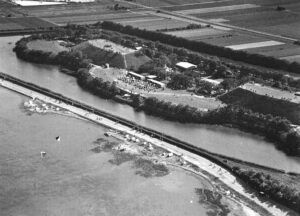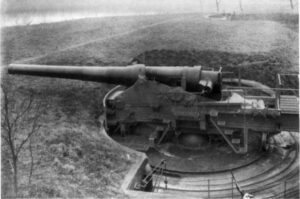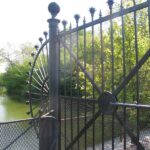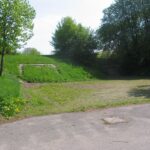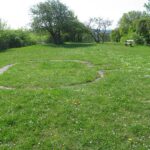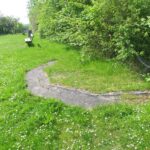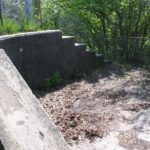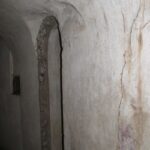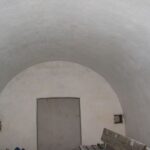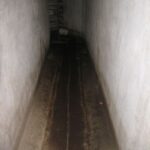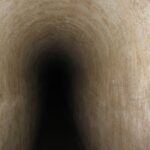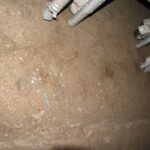The Kastrup fort was built over the years 1886 to 1887.
It was originally named Kastrup Battery, but at a time the name was changed to the Kastrup Fort.
The fort is part of the middle (second) line of the sea defense.
The fort’s task was to secure the southern entrance to Copenhagen through the waters Kongedybet and Hollænderdybet between the Saltholm island and the Middelgrund Fort.
The fort had open emplacements for the artillery.
The cannons were mounted on each side of two large traverses. These traverses had magazines in casemates.
Between the two middle guns there was a smaller traverse without casemate building.
The magazine walls consisted of 1.5 meters of concrete covered by approx. 30 meters of soil. According to the conditions of the time, they were considered safe.
The ammunition was transported to the cannons on small wagons through 4 long tunnels, two from each
magazine.
There was no accomodation for the crew, only tents on the terreplein.
The fort is surrounded by a wet moat, 30-50 meters wide and approx. 3 meters deep. In the moat a number of caponiers were placed . They were armed with mitrailleuses or later machine guns.
The Armament
4 pcs. of 30.5 cm. cannons.
3 pcs. of 15 cm cannons,
A number of mitrailleuses.
2 observation stations
1 pcs. of 90 cm floodlight
1 pcs. of 150 mm. floodlight
During World War I, the armament was expanded by
2 pieces 75 mm. and
2 pcs. 47 mm. balloon cannons and a number of machine guns against aircrafts.
2 binocular stations, the fort had a 90 cm. and a 150 cm. floodlight.
The fort was closed in 1922.
The exterior
- The gate
- The commanders accommodation
- Magazine building
- Emplacement for 30,5 cm. cannon
- Observation and firing control
- Gun emplacement
- Emplacement 47 mm. gun
- Emplacement for the floodlight
The interior
- Corridor in one of the magazines
- Corridor in one of the magazines
- Magazine
- Tunnel to the battery wits rails
- The ammunition tunnel
- Traces of the 30,5 cm. grenades

